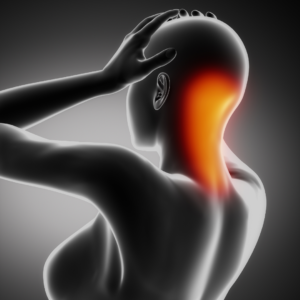When it comes to addressing pain, improving mobility, and recovering from injuries, two healthcare professionals often come to mind: chiropractors and physical therapists (PTs). Both provide vital services, but they have distinct approaches, educational backgrounds, and long-term outcomes. In this blog, we’ll explore the similarities and differences between chiropractors and physical therapists and discuss why physical therapy may offer superior benefits for long-term recovery.
Chiropractors: The Focus on the Spine
What Chiropractors Do:
Chiropractors focus on diagnosing and treating neuromuscular disorders, with a particular emphasis on manual adjustments or manipulations of the spine. Chiropractic care is based on the belief that many health issues stem from spinal misalignments (or subluxations), which can affect the nervous system and overall well-being.
Techniques and Approaches:
The primary tool of a chiropractor is spinal manipulation, often referred to as a chiropractic adjustment. The goal is to realign the spine to restore proper function, reduce pain, and promote the body’s self-healing capabilities. While spinal adjustments are the hallmark of chiropractic care, some chiropractors also offer complementary treatments such as massage therapy, nutritional counseling, and exercise advice.
Physical Therapists: Comprehensive Rehabilitation
What Physical Therapists Do:
Physical therapists focus on diagnosing and treating a wide range of musculoskeletal and movement-related issues. PTs are movement specialists, and their treatments aim to improve mobility, strength, flexibility, and functional movement through active rehabilitation and various physical modalities.
Techniques and Approaches:
PTs employ a holistic and individualized approach, often involving exercises to strengthen muscles, improve joint range of motion, and address any compensatory movement patterns that may have developed. They also use manual therapy, soft tissue mobilization, and modalities like ultrasound or electrical stimulation. The key focus is on restoring function and preventing future injuries through education and tailored exercise programs.
Similarities Between Chiropractors and Physical Therapists
While chiropractors and physical therapists have distinct roles, they share several similarities in their approach to patient care:
Focus on Non-Invasive Treatment:
Both chiropractors and physical therapists emphasize non-invasive, drug-free approaches to managing pain and injury recovery. They aim to avoid surgery unless it is absolutely necessary.Manual Therapy:
Both professionals use hands-on techniques to address pain and dysfunction. Chiropractors manipulate the spine, while physical therapists may perform joint mobilizations, muscle releases, or soft tissue work.Patient Education:
Education is a key aspect of care for both professions. Chiropractors may educate patients on posture and ergonomics, while physical therapists typically provide detailed instruction on exercises to aid recovery and prevent future injuries.Treatment of Musculoskeletal Conditions:
Both professionals treat conditions like back pain, neck pain, and joint issues, though their approaches to treatment differ.
Key Differences Between Chiropractors and Physical Therapists
Despite some overlap, there are significant differences in their philosophies, techniques, and scopes of practice:
Philosophy of Care:
- Chiropractors view many health issues through the lens of spinal misalignment, believing that these misalignments can affect not just the musculoskeletal system but the nervous system and overall health.
- Physical Therapists focus on movement impairments and functional limitations. Their goal is to enhance movement patterns, improve strength and flexibility, and promote long-term functional independence.
Treatment Approach:
- Chiropractors primarily use spinal adjustments and may provide treatments based on the belief that realigning the spine can alleviate many conditions.
- Physical Therapists use a combination of exercises, stretches, manual therapy, and patient education, with a focus on long-term recovery through active patient participation.
Scope of Conditions Treated:
- Chiropractors mainly treat conditions related to the spine, such as back and neck pain, though some may expand their practice to include other musculoskeletal issues.
- Physical Therapists address a wider range of conditions, including sports injuries, post-surgical recovery, neurological conditions (like stroke), and chronic conditions like arthritis or fibromyalgia.
Educational Background:
- Chiropractors obtain a Doctor of Chiropractic (DC) degree, focusing primarily on the spine, musculoskeletal system, and spinal adjustments.
- Physical Therapists hold a Doctor of Physical Therapy (DPT) degree and are trained in diagnosing and treating movement impairments across the entire body.
Why Physical Therapy is Superior for Long-Term Recovery
While both chiropractors and physical therapists can offer short-term relief, physical therapy stands out as a more comprehensive and sustainable solution for long-term recovery. Here’s why:
Active Rehabilitation:
Physical therapy is grounded in active rehabilitation, which involves patient participation through exercises and stretches. By strengthening muscles and improving joint stability, PT helps address the root causes of pain and dysfunction, reducing the likelihood of recurrence. This active approach not only alleviates pain but also restores movement and prevents future injuries.Individualized, Holistic Care:
Physical therapists take a holistic view of the body and focus on the entire musculoskeletal system, not just the spine. PT treatment plans are highly individualized, targeting each patient’s specific needs and addressing any contributing factors, such as muscle imbalances or poor movement patterns. This tailored care is key to long-term success.Education and Empowerment:
Physical therapists prioritize patient education, teaching individuals how to perform exercises correctly, improve their posture, and move more efficiently. This empowers patients to take control of their recovery and maintain the improvements they’ve made long after therapy has ended.Prevention of Future Injuries:
Physical therapy not only focuses on recovery from injury but also on preventing future injuries by improving strength, flexibility, and movement patterns. By identifying and correcting the underlying causes of dysfunction, PT reduces the risk of reinjury or chronic pain.Comprehensive Approach to Health:
PTs are trained to treat a wide variety of conditions beyond spinal issues, making them better suited for addressing the full spectrum of musculoskeletal and movement-related problems. Their treatment approach goes beyond symptom relief and targets long-term health and functionality.
Conclusion: Choosing the Right Path for Your Recovery
While chiropractors and physical therapists both offer valuable services, physical therapy provides a more holistic, active, and comprehensive approach to long-term recovery. The emphasis on patient participation, education, and prevention makes physical therapy a superior choice for those looking to not only recover from injury but also improve their overall movement and prevent future health issues.
Whether you’re dealing with a sports injury, recovering from surgery, or seeking relief from chronic pain, working with a physical therapist can help you achieve lasting results and improved quality of life.
For more helpful information on how the Results Treatment Method can improve your quality of life, read our other blogs at resultsrehab.com/blogs.




